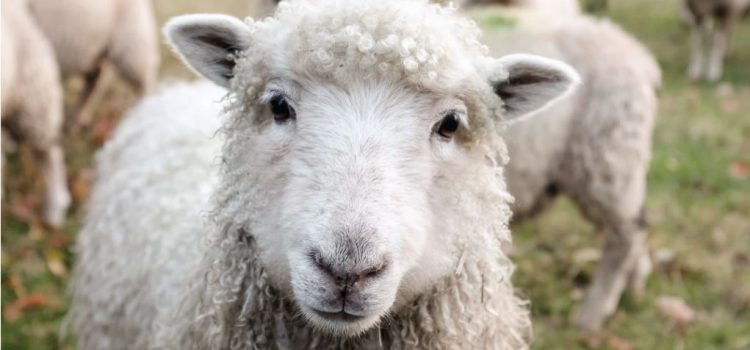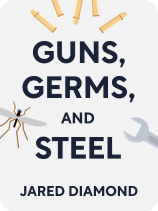

This article is an excerpt from the Shortform book guide to "Guns, Germs, and Steel" by Jared Diamond. Shortform has the world's best summaries and analyses of books you should be reading.
Like this article? Sign up for a free trial here .
Why did Eurasian society thrive throughout history? What set Eurasian farming apart from other areas of the world?
According to the author of Guns, Germs, and Steel, Jared Diamond, a large part of why Eurasia thrived was due to its history of domesticated animals. Diamond claimed that Eurasia had more domesticable farm animals than most parts of the world.
Keep reading to learn about the history of domesticated animals on Eurasian farms.
Eurasia Had More Domesticable Animals
In addition to having good plants to work with, Eurasia had a history of domesticated animals to farm. Diamond identifies seven attributes that wild animals must have to be good candidates for domestication, including the following four:
1. They must have a diet that’s sustainable under domestic conditions: That is, they must eat a type and amount of food that early farmers could provide. Non-picky herbivores or omnivores were better candidates than picky eaters or carnivores.
(Shortform note: Experts describe this attribute as being a generalist eater, as opposed to a specialist eater. Specialist eaters only eat particular foods—for example, the Canada lynx mainly eats snowshoe hares. By contrast, the raccoon eats a wide variety of plants, animals, and insects. In a domestic environment, the more specialized an animal’s diet, the less likely it is to survive.)
2. They must grow quickly. Animals that don’t reach maturity or reproduce for years are unsuitable for domestication.
(Shortform note: Not all experts include fast growth as a trait that makes an animal more suitable for domestication. However, other reproductive attributes that have similar benefits are often included in lists of traits considered favorable for domestication: For example, polygamous mating habits are better for domestication than pair bonding habits. One reason for this is that polygamous mating habits enable herds to produce many offspring so the herd grows quickly (producing abundant edible product), even if each individual offspring is slow to mature. Diamond doesn’t note several attributes, such as this, that other domestication experts consider valuable traits.)
3. They must have a relatively tolerant disposition. If they’re too aggressive, they won’t be suitable for domestication.
4. They must be relatively calm and not quick to spook and run. Otherwise, they’d be completely unmanageable.
(Shortform note: These last two traits (being tolerant and calm) are often grouped together under the term tameness. Specialists note that all domesticated animals—whether they were inadvertently or purposefully domesticated—were selected for being tamer than wild relatives. These animals, they believe, had to have been comfortable being close to, or even handled by, humans. As a result, they suggest that tameness is the primary trait that makes it possible for an animal to be domesticated.)
Only 14 ancient animals in the world had all the attributes Diamond describes. Eurasia was the continent with the greatest number of candidates: It had 13. No other continent had nearly as many. For this reason, Eurasia had the most potential for developing animal domestication.
(Shortform note: Diamond develops this point to suggest that Eurasians ended up with more domesticated animals because they had more candidates to start with. This assumes that domestication is inevitable if it’s possible. Given this, Diamond believes societies on other continents would have domesticated any animals they could have domesticated. Other scholars disagree, arguing that, in at least some cases, societies chose not to domesticate animals they could have domesticated. For example, the Aztecs had five domesticable candidates they never domesticated. Scholars argue, then, that choice has as much to do with domestication as opportunity.)
Why Eurasia?
Diamond suggests three reasons Eurasia had so many animals that met these qualifications, while other continents didn’t.
First, Eurasia simply had more animals that were potentially good for domestication before humans even began living on the continent. This was mainly due to its extremely large land area and favorable ecological conditions, which together supported a diverse array of animals.
(Shortform note: Diamond doesn’t reference any sources to support the claim. A recent study comparing the number of large prehistoric herbivores (good candidates for domestication) on each continent didn’t support Diamond’s assertion—it found that South America had the most (77) and Eurasia had the least (31). This discrepancy may be because the researchers distinguished between Eurasia and Tropical Asia. If these two regions are combined, the total number of animal candidates becomes 92, according to this study. Diamond’s overall thesis doesn’t depend on this point, but it’s clear that details like this are open to interpretation among experts.)
Second, it didn’t lose as many animal candidates to prehistoric extinctions as other continents, such as Australia and the Americas. Diamond suggests this is because the animals on those continents were first exposed to humans later in human history, when we were more developed as hunters. Because those animals were unafraid of humans (having never encountered them before), the hunters could hunt them to extinction. In Eurasia, by contrast, animals and humans interacted throughout the long process of human evolution, so animals became more accustomed to the danger humans posed and developed successful survival strategies.
| Andrew Sluyter’s Critique of Diamond One critic of Diamond, Andrew Sluyter, cites this particular point as an instance of Diamond’s logical inconsistency. As he frames it, Diamond contradicts himself by arguing on the one hand that only geography determined the availability of domesticable animals and on the other hand that early humans determined that availability in the Americas by hunting them to extinction. If the Americas are an exception to the geographic determinism rule, why is it a rule at all? However, this appears to be an uncharitable reading of Diamond. First, Sluyter seems to misread Diamond’s argument about geographic determinism as an absolute rule. Diamond never indicates this, instead only arguing that geography influenced the course of societies (including the availability of domesticable animals). Second, Sluyter fails to note a key part of Diamond’s argument. As we’ve summarized it here, Diamond argues that the reason hunters could extinguish the population of domesticable animals in the Americas but not Eurasia was because they arrived there later in history than humans arrived in Eurasia. These late arrivals were more advanced hunters than their Eurasian ancestors had been. The evidence for this theory (archaeologist Paul Martin’s overkill hypothesis) is open to criticism, but Sluyter doesn’t question it in his critique of Diamond—he doesn’t account for it at all. This is a problem because the overkill hypothesis provides a reason why the circumstances in the Americas were different than the circumstances in Eurasia. |
Finally, more of the surviving Eurasian animals were good for domestication than were the surviving animals of other continents. Diamond observes that 18% of the surviving animal candidates in Eurasia were suitable for domestication—in the Americas, only 4% were, and there were no native animal candidates in Australia or Sub-Saharan Africa.
(Shortform note: Recent evidence suggests that Sub-Saharan Africa may have had more domesticable animals than Diamond indicates here. While certain species, such as the cow and goat, are up for debate (scholars are unsure whether they originated in Africa or Eurasia), the donkey and the guinea fowl almost certainly originated in Sub-Saharan Africa.)

———End of Preview———
Like what you just read? Read the rest of the world's best book summary and analysis of Jared Diamond's "Guns, Germs, and Steel" at Shortform .
Here's what you'll find in our full Guns, Germs, and Steel summary :
- An in-depth look into why societies historically took different paths
- The environmental factors that affected the historical development of those societies
- Why Eurasians had strategic advantages over non-Eurasians






